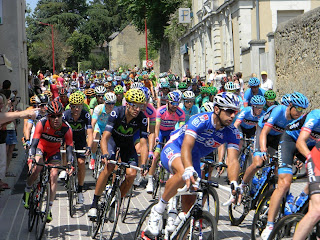Three of us drove up from Colorado, Will, Karen, and I. We would meet the rest of the crew at the put in. Will and Karen each drove their own car, and I switched back and forth betwen the cars.
We spent our first night camped by grays creek near the small town of Alpine Wyoming. We had breakfast the next morning in the Yanky Doodle Diner, red white and blue everywhere. After a shopping stop in the town of Salmon Idaho, we drove to the put in, where we met the rest of our team.
 |
| John and Anne |
 |
| Karen |
 |
| Dave |
Dave we knew from previous trips, he would be in a hard shell kayak. John and Anne had decided to retire in Boise Idaho from Houston, they would be in a tandem whitewater canoe, they were new to us. Bob and Karin were from McCall Idaho, and also new to us. Bob would be in his raft, Karin in a hard shell kayak. Yes, the trip had both a Karen and a Karin, confusing. Will, Karen, and I would be in solo whitewater canoes.
Our initial impressions of the river was that is was bigger water than we were used to. Our boats filled up with water often. Unnamed rapids were larger than named rapids on Utah rivers. We were impressed. We spent our first night at lower lance bar.
 | |
| Karen |
On day two, Black creek rapid was tough, and one canoe flipped. We enjoyed the hot springs. I cooked a fancy stir fry dinner, with a lot of help from Karen.

On day three, we had cooler weather, more boats filling with water, and two flips. We camped just before Big Mallard rapid at Upper Yellow Pine bar. Rain hit before dark, first a storm them steady rain.
On the morning of day four, we were packing up wet gear and dealing with problems. Will dislocated his finger; we were trying to figure out how to evacuate him, when he was able to relocate it himself. He decided to continue. There was a large hole in Anne's and John's canoe, which John successfully patched with duct tape. The sun came out in the afternoon. Big mallard rapid was an exciting run on the left between two rocks. I tried to go to right of one rock, but the current would not let me, so I went to the left. Another canoe flipped. Elkhorn rapid was also exciting, run left then right. We hiked to the Jim Moore complex of cabins, and saw bear scat. We camped at reed creek, which was nice except bugs. Luckily Karen had brought a large screen tent, in which we could eat and cook.
 |
| Bob investigating farm implements |
 | |
| Karin cooking in the screen tent |

On day five, we had more flips. The Buffalo Bill museum was an interesting stop. He was a character who lived on the river for many years, and built his own fort to keep the government away. We camped below confluence, cove creek. Nice weather, few bugs.
On day six, we wanted to make 15 miles so we got 9:30 am start. We stopped at Shepp ranch and Polly ranch, a bit of history. There was another flip. We stopped at 12 miles due to wind. We watched the fire helicopters at work through the smoke. A jet boat stopped to tell us about the fire, which was where we had intended to stop! As predicted, 6 mules walked through camp on way to Shepp ranch, on their own. We had a pleasant evening, and would try to get out tomorrow.
 |
| Will |
On day eight, Will and I said goodbye to everyone, and headed home. Karen would wander home at her own pace. I spent much of the drive home worrying about my house, which had flooded while I was on the river. Amazingly, I heard about the flood while I was still on the river, bad news travels fast. We spent the night in Evanston Wyoming, and drove back to Colorado on day nine. There were a few roads closed between Will's house and mine, but I got home, and had to start dealing with the mess.
A great trip, a challenging trip, and very different from the Utah rivers that we usually paddle.
This blog post was greatly delayed by the 10 weeks it took to put my house back together.













































